Laser Skin Resurfacing: The Ultimate Guide
Lasers are being used more and more for cosmetic purposes, primarily for correcting skin imperfections. Here’s everything you need to know about laser skin resurfacing.
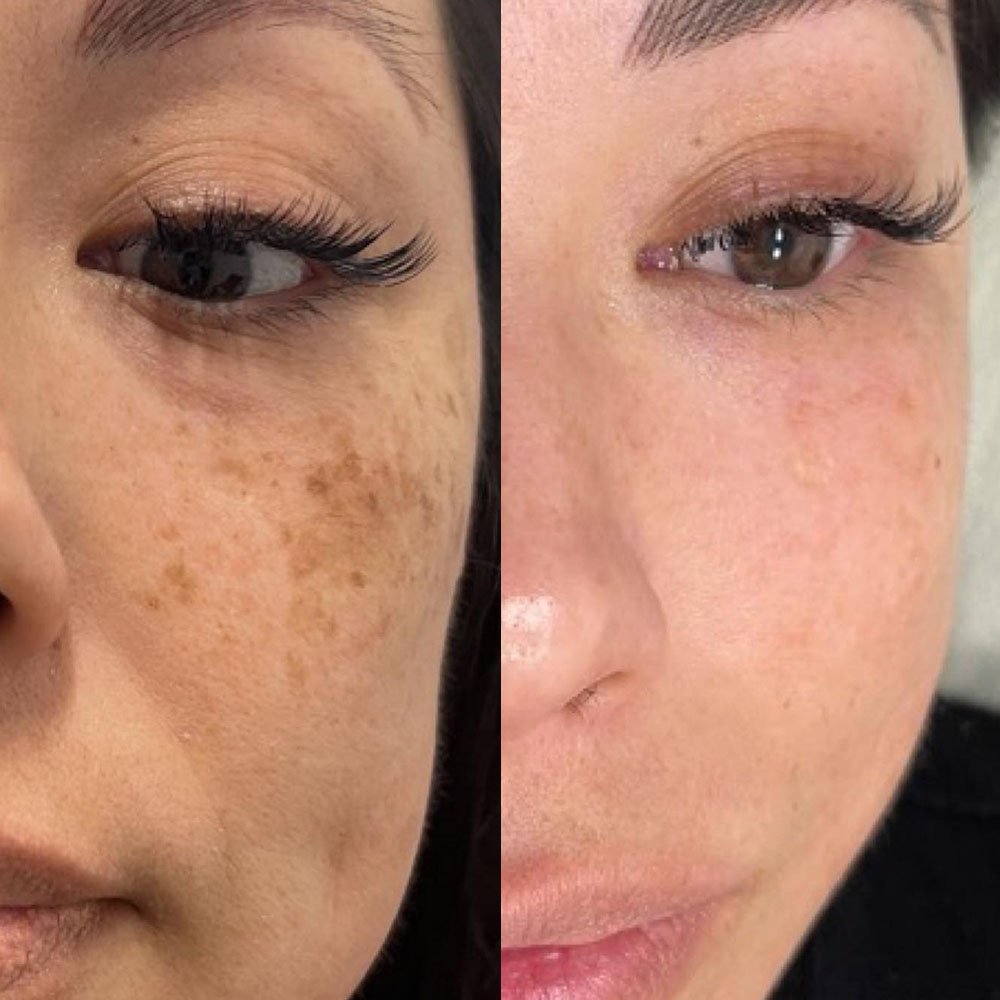
Image source : PMUhub
Explore more microblading topics
Laser skin resurfacing is a cosmetic treatment also known as laser peel, laser vaporization, and lasabrasion. It’s used to address several skin conditions as well as to reduce or eliminate blemishes.
Laser skin care should be performed by certified, licensed plastic surgeons at accredited facilities. It includes procedures like lip lightening, lip plumping, permanent makeup removal, etc.
But what exactly is laser skin resurfacing? PMUHub investigates the different lasers, treatment types, the pros, and cons, and whether laser skin resurfacing is worth the cost.
Is Laser Skin Resurfacing Good for Your Skin?
Yes, it is! Each type of laser skin care treatment has great benefits for the condition or blemish it treats.
All facial resurfacing treatments have one thing in common: in their own ways, they each stimulate your body’s natural rejuvenation processes.
Your skin is prompted to produce fresh collagen and elastin. This means your skin becomes healthier, more flexible, and better-toned with a smoother texture.
As a bonus, you get an even, glowing complexion, as excessive pigmentation is removed with great precision.
But this is just the beginning. Laser skin resurfacing is actually a very wide range of treatment. Your treatment provider can provide you with all the details about your specific procedure, but read on for more general information.
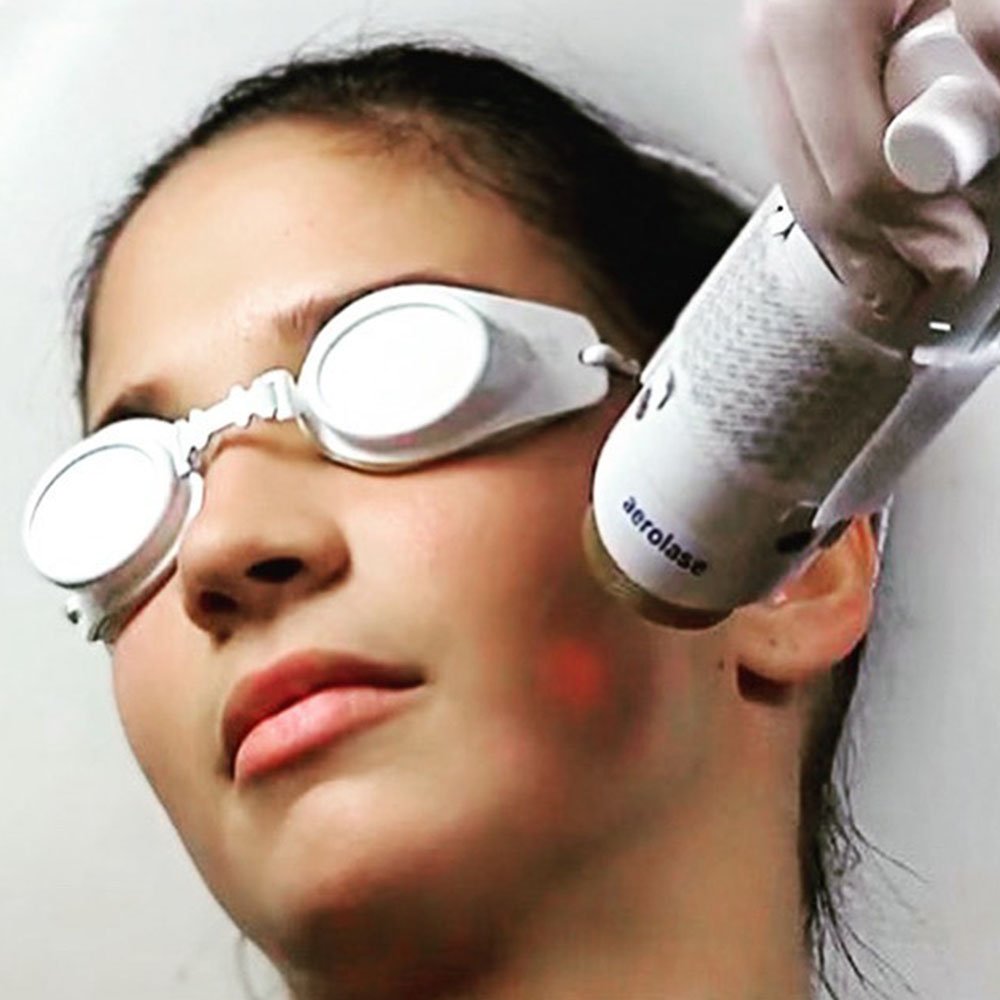
What Conditions Does Laser Skin Care Help Treat?
Facial resurfacing (and skin resurfacing in general) is used to address a variety of skin issues, ranging from medical conditions to simple aesthetic preferences.
The treatments can be roughly grouped into 3 categories: treatments for signs of aging, pigmentation and hair growth treatments, and those addressing underlying medical conditions, scarring, and lesions.
Signs of Aging
Skin changes induced by normal aging can be reduced with facial resurfacing:
- Fine lines
- Wrinkles
- Loss of skin elasticity
- Age spots
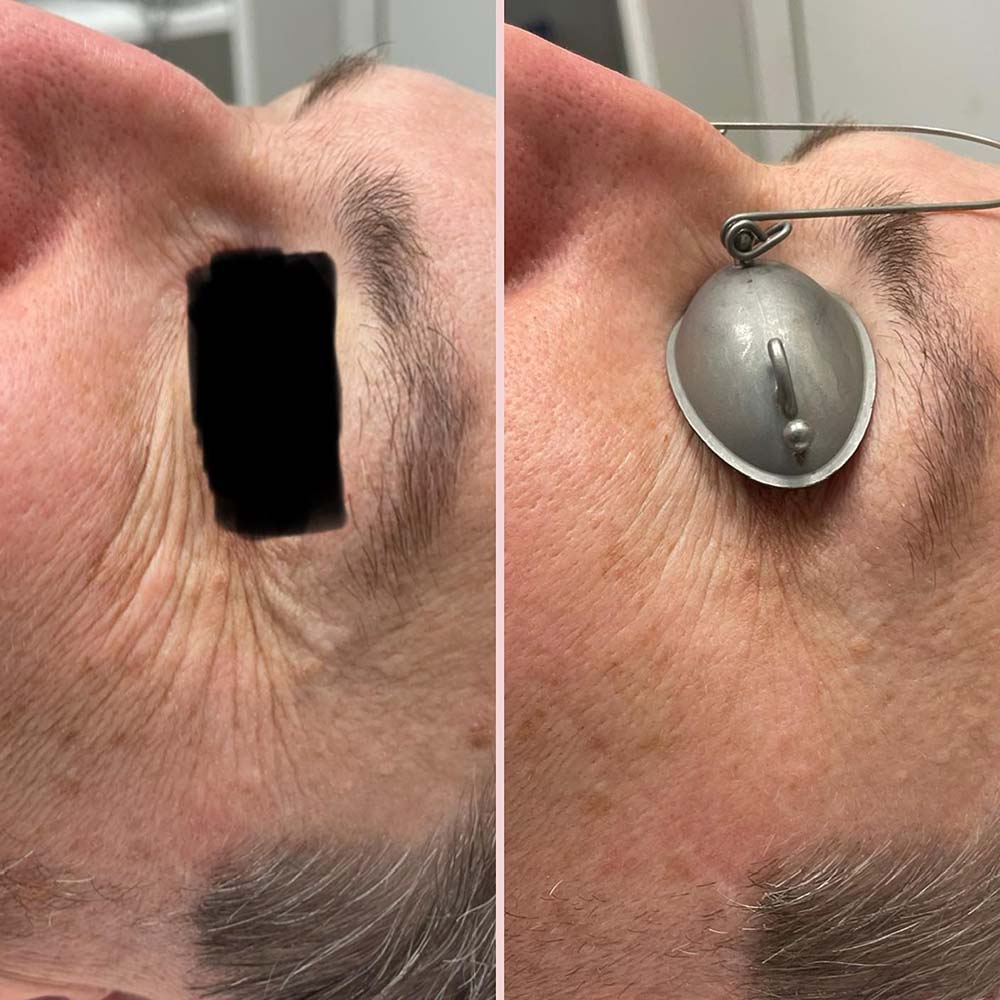
Pigmentation and Hair Growth
Laser skin care can help with issues that stem from too much or too little pigment, or from undesirable hair growth. They include but are not limited to:
- Hyperpigmentation,
- Sun spots,
- Freckles,
- Melasma,
- Vitiligo,
- Age spots,
- Excessive hair removal, etc.
Scarring, Lesions & Medical Conditions
Laser skin resurfacing is immensely helpful in addressing scars and other unwanted marks on the skin. It can also minimize or eliminate the unpleasant aesthetic effects of certain medical conditions, including:
- Acne (active, hormonal, cystic)
- Acne scars,
- Chicken pox scars,
- Stretch marks,
- Facial veins (varicose veins, spider veins, etc)
- Broken capillaries,
- Moles and beauty marks,
- Birthmarks,
- Angioma,
- Warts,
- Rosacea,
- Keratosis,
- Psoriasis,
- Eczema,
- Milia, etc.
In addition to all of the above, laser skin resurfacing can be used to treat uneven skin tone, comedones, enlarged pores, and excessive sebum production.
Consult with your skincare tech or dermatologist about what you want to address and see if laser treatment is the best course of action for your particular concern.
How Does Laser Skin Resurfacing Work?
Facial resurfacing can be done using one of four methods: ablative, non-ablative, fractional, and IPL (Intense Pulsed Light). Each of them treats different skin conditions, utilizes different kinds of laser, and works in a slightly different way.
Let’s take a closer look.
Ablative Lasers
Ablative lasers work by removing the top layers of the skin. They typically target the outermost layer of skin, the epidermis, and successfully treat conditions such as warts, wrinkles, or scars.
The laser uses heat to vaporize the targeted cells, inflicting a micro-injury and prompting the body to start its natural healing process.
This triggers the production of new collagen and elastin in the treated area. After recovery, the skin is tighter, smoother, healthier, more flexible, and more youthful.
Depending on the severity of the condition and the size of the area treated, ablative laser resurfacing can go deeper than the epidermis.
In that case, the treatment might target one or more layers of cells in the upper dermis as well. Your provider will determine how deep the laser needs to go and which type is best for your skin.
The types of laser used for ablative treatments include carbon dioxide (CO2) and erbium (Er:YAG) lasers.
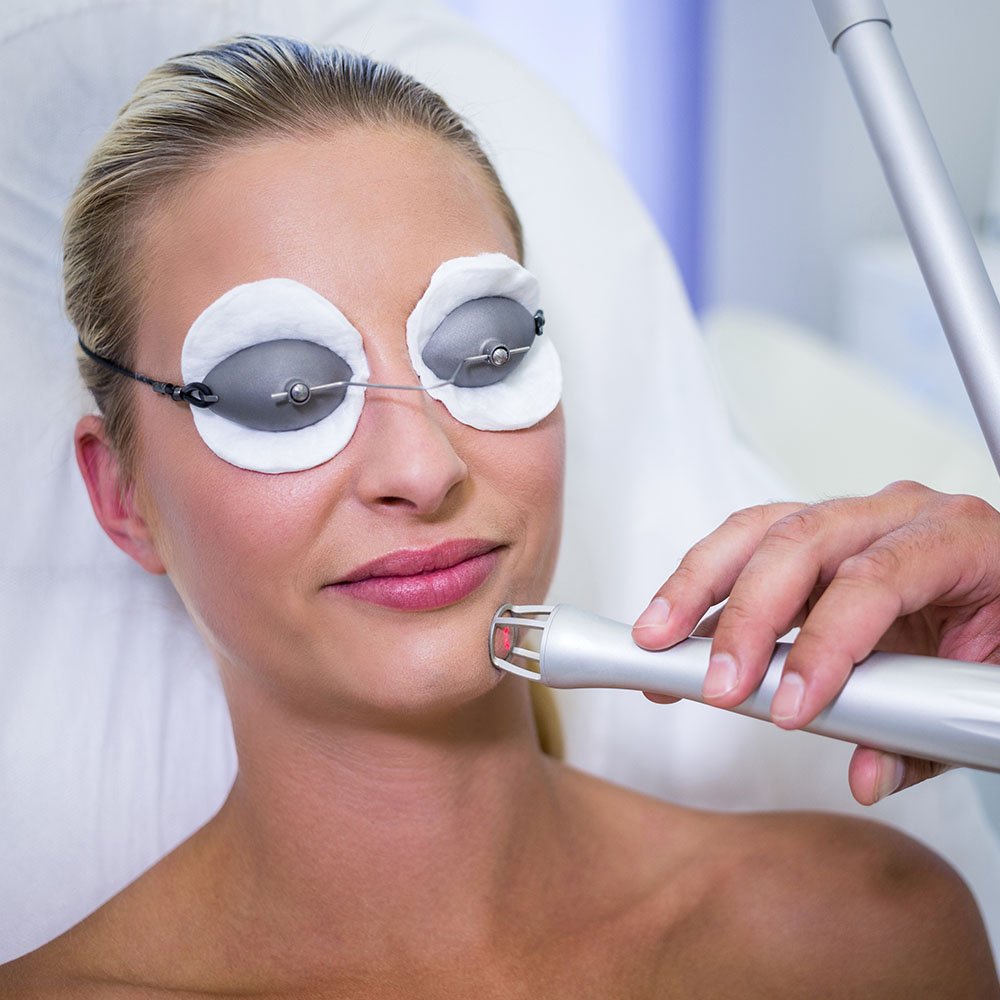
Carbon-Dioxide Laser
CO2 lasers are the earliest type of laser used in skin care. They emit either very short pulses of energy, called ultrapulses, or one continuous beam of light in a scanning pattern.
They remove the targeted skin layers with great precision and minimal heat damage to the surrounding tissue.
Er:YAG Laser
Er:YAG stands for Erbium-Doped Yttrium Aluminum Garnet. Er:YAG lasers emit infrared light at the wavelength of 2940 nm.
The complicated name basically means that the source of light energy is in a solid state, rather than a gas like in CO2 lasers.
It’s a rod made of a synthetic garnet crystal (YAG), augmented with some erbium (Er). Erbium is a rare metal with fluorescent properties that amplify the effects of the YAG.
But you don’t need to know all this. It’s enough to say that it’s a very effective way to stimulate collagen production, tackle photoaging, and improve the appearance of the skin overall.
Non-Ablative Lasers
Non-ablative laser skin resurfacing treats minor flaws closer to the skin’s surface but from within, so to say. It targets the deeper layers of tissue – specific cells or cell clusters – without damaging the epidermis.
It works for conditions such as shallower wrinkles, fine lines, age spots, or broken capillaries.
This form of laser resurfacing can also help with imperfections like redness or hyperpigmentation. People with lax skin or rosacea can also benefit from non-ablative laser skin care.
The types of laser used for non-ablative treatments include Er:YAG, pulsed-dye, and alexandrite lasers.
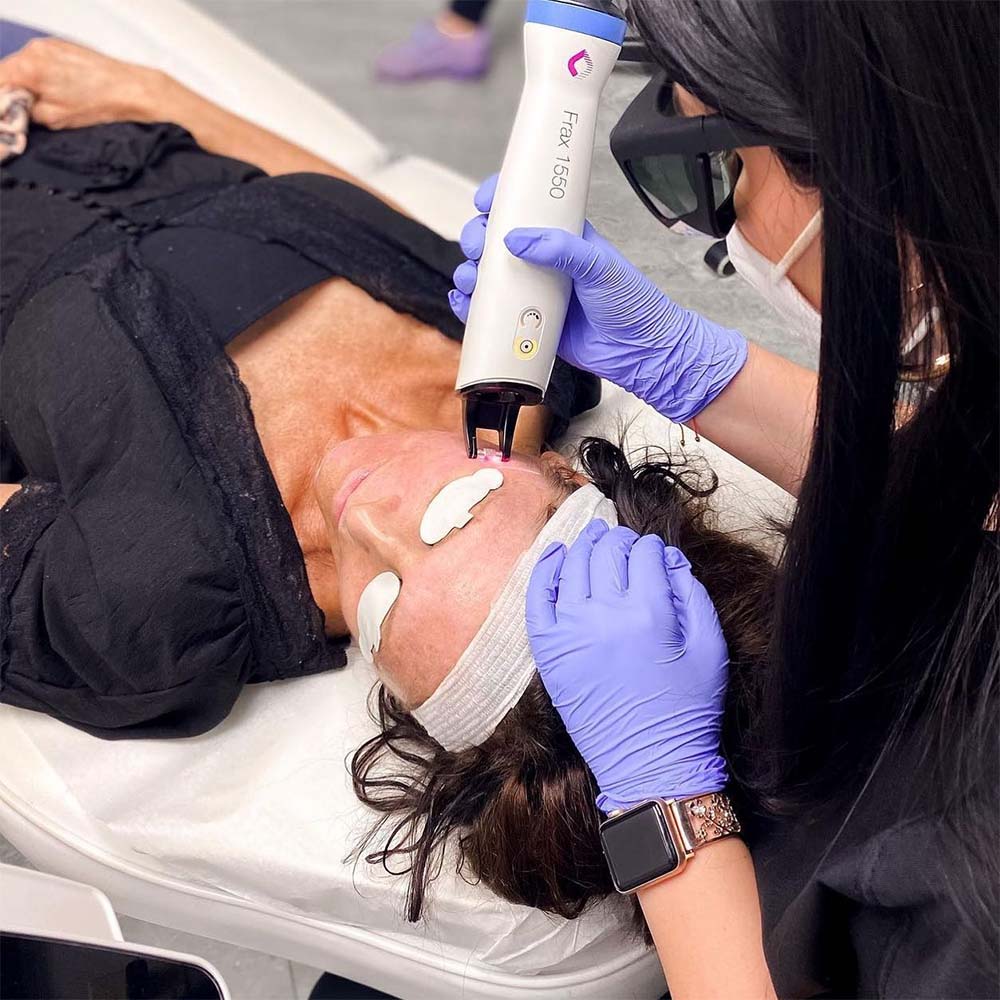
Er:YAG Laser
Er:YAG lasers can be used non-ablatively as well as ablatively. When used in non-ablative treatments, the Er:YAG doesn’t affect the epidermis at all. Instead, it passes through the layers of skin to target cells deeper down.
This technique promotes collagen remodeling. Instead of generating all new collagen and elastin, your body fixes and strengthens its existing collagen bonds between cells. This makes the skin tighter and lighter-toned.
Non-ablative Er:YAG treatments are popular for removing wrinkles, fine lines, and age spots, as well as for treating skin laxity that comes with age.
Pulsed-Dye Laser
Pulsed-dye lasers specifically target the pigments within the skin layers. They heat the pigmented cell clusters and absorb the pigments out of the skin.
Pulsed-dye facial resurfacing is used to treat rosacea, broken capillaries, and various forms of hyperpigmentation.
Alexandrite Laser
Alexandrite lasers are similar to Er:YAG lasers in that the light source is solid – specifically, an alexandrite crystal. It likewise emits infrared light, though at a different wavelength (755 nm).
Like the CO2 models, alexandrite lasers can emit a single continuous beam or several short high-intensity pulses. The light from alexandrite lasers can target either melanin in general, or red pigment (hemoglobin) specifically.
They’re used to treat spider and thread veins, vascular birthmarks, freckles, age spots, and wrinkles caused by excessive sun exposure.
Fractional
Fractional laser skin care is a mixed category that includes both ablative and non-ablative treatments. Consequently, it includes all the laser types we mentioned above. What makes it distinct is the way the laser is applied.
In fractional skin resurfacing, the laser’s energy isn’t projected in a single beam like in the other treatments. Instead, it’s broken up into hundreds or even thousands of tiny separate mini-beams.
This way, when the laser is applied to an area of the skin, there are untouched parts between the treated spots. This format of facial resurfacing treatment reduces the necessary downtime as well as recovery time.
Fractional laser skin care is used to address the various blemishes related to aging, such as wrinkles or discoloration (age spots).
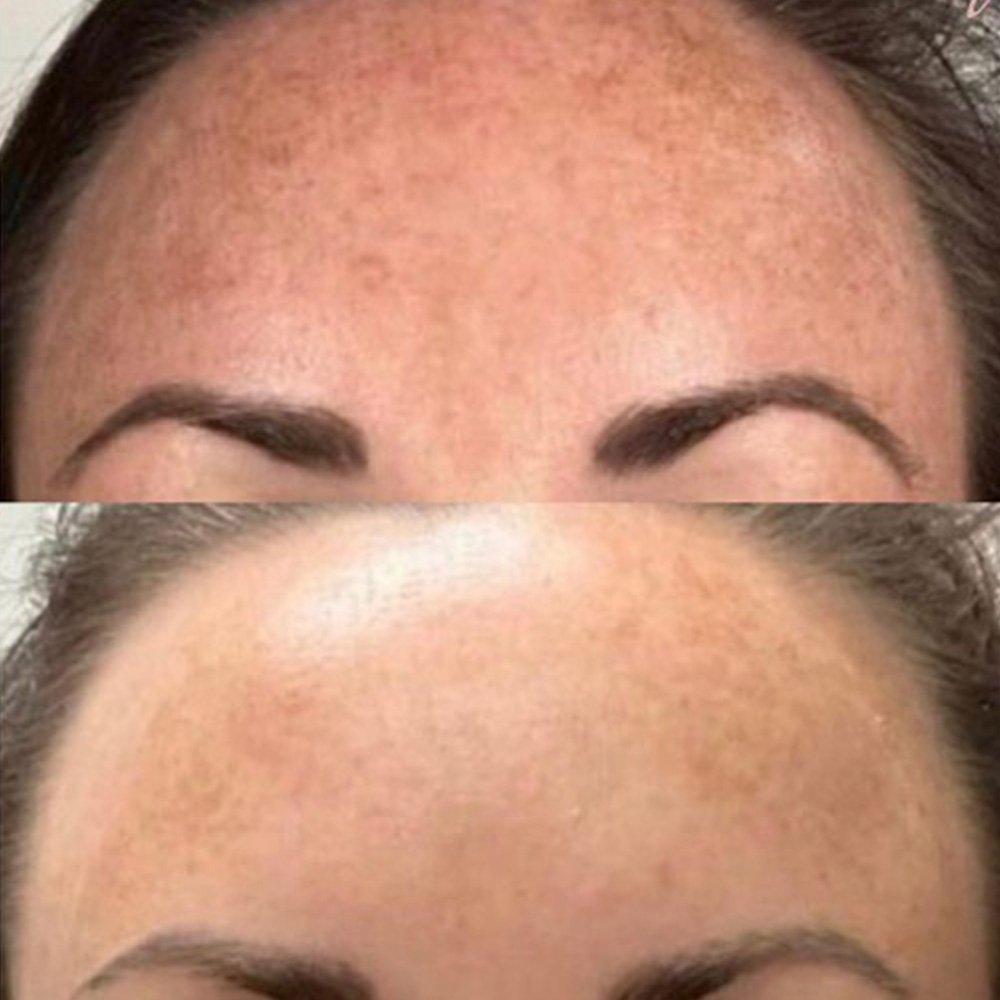
IPL treatments
IPL stands for Intense Pulsed Light. This treatment is also marketed as photorejuvenation, photofacial, and BBL (broad band light). It’s not a laser technically speaking, but they get grouped together because they’re used to address the same concerns.
Specifically, IPL is used to treat hyperpigmentation, rosacea, sun damage, acne, texture issues, and vascular lesions.
Like lasers, IPL works by targeting an area of skin with light. However, instead of using a beam of one highly focused wavelength, this treatment delivers short pulses of light encompassing a broad spectrum of wavelengths.
Exposing the skin to various wavelengths of light at once has two beneficial effects.
First, the varying wavelengths absorb excessive pigmentation. They affect both the brown (melanin) and the red (hemoglobin) pigments to achieve a more even skin tone and a smoother complexion.
Second, IPL stimulates collagen production, just like lasers. It does so to a lesser degree, though, so the changes to skin texture are more subtle.
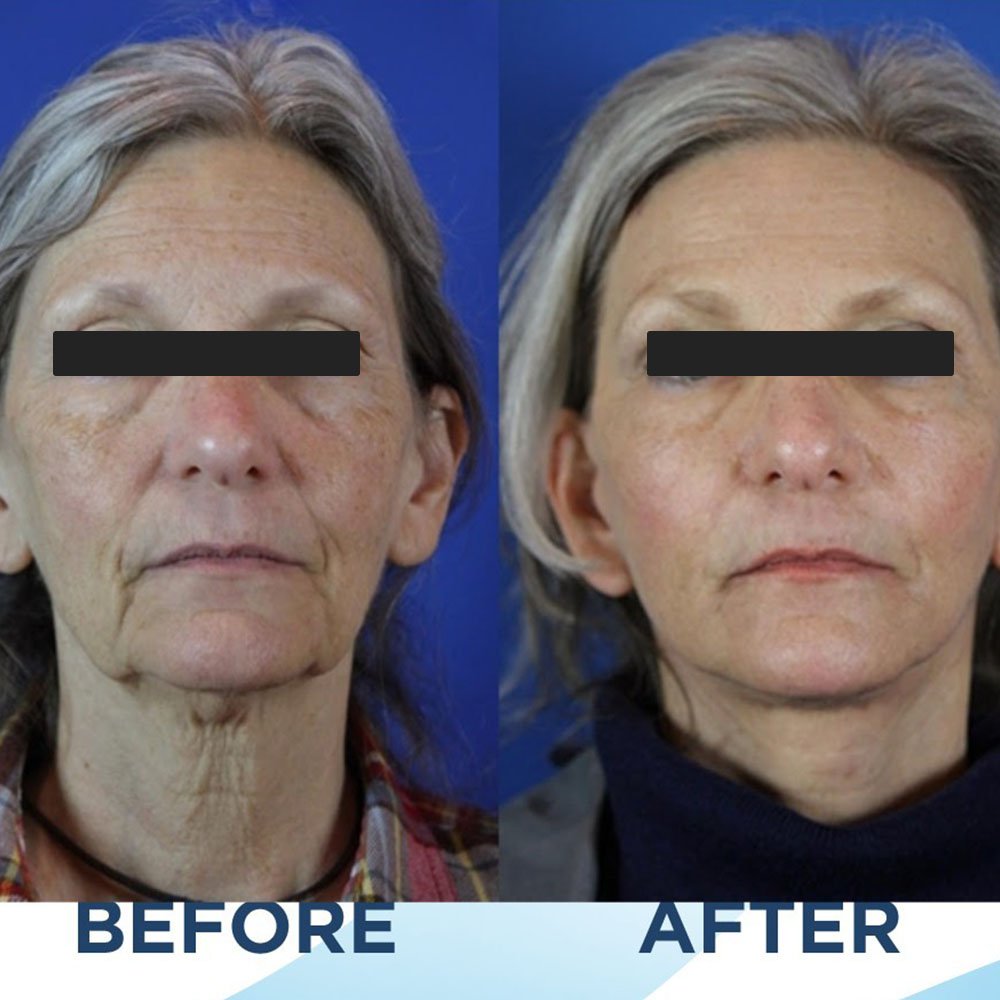
How to Choose the Right Treatment Provider
Who performs your laser skin resurfacing is even more important than which procedure you opt for. In the hands of an untrained, unskilled technician, lasers can be counterproductive and even dangerous.
Make sure you book your laser resurfacing treatment with a reputable board-certified provider – ideally a plastic surgeon.
If you’re located in the US, there are a few regulatory bodies you can rely on for finding a suitable provider. You can look for one in your area via:
- the American Board of Plastic Surgery,
- the American Board of Cosmetic Surgery,
- the American Society of Plastic Surgeons,
- the American Board of Medical Specialties.
There are also state and regional societies you can look into for more localized insights.
If you’re located in Canada, your chosen provider must be board certified by the Royal College of Physicians and Surgeons of Canada.
You can peruse these regulatory bodies’ directories of surgeons, or look for one on your own. If you opt for searching independently, make sure you check the credentials of anyone you find against the data of these official boards.
Once you find a few providers who seem trustworthy, contact them and book consultations. This is your opportunity to get to know them, ask any questions, address your concerns or insecurities, and see how well you get on.
Who Is a Good Candidate for Laser Skin Resurfacing?
You might consider a laser resurfacing procedure if you struggle with one or more of the conditions we listed above. The severity of your problem and the size of the area it affects will directly influence your available choice of laser treatments.
In general, if you have a healthy immune system, no serious underlying health issues, and your skin type is suited to the treatment you’re interested in, you will probably be a suitable candidate.
That said, your skincare provider will ask you about your medical history, lifestyle, as well as any medication and supplements you might be taking. They will also do a skin assessment.
If there are any factors preventing you from getting the skin resurfacing treatment you want, they will explain why it’s a bad idea and recommend the best alternative solution for your specific circumstances.
That’s why it’s essential to have a detailed consultation with both your GP and your chosen treatment provider and to be entirely honest with them.
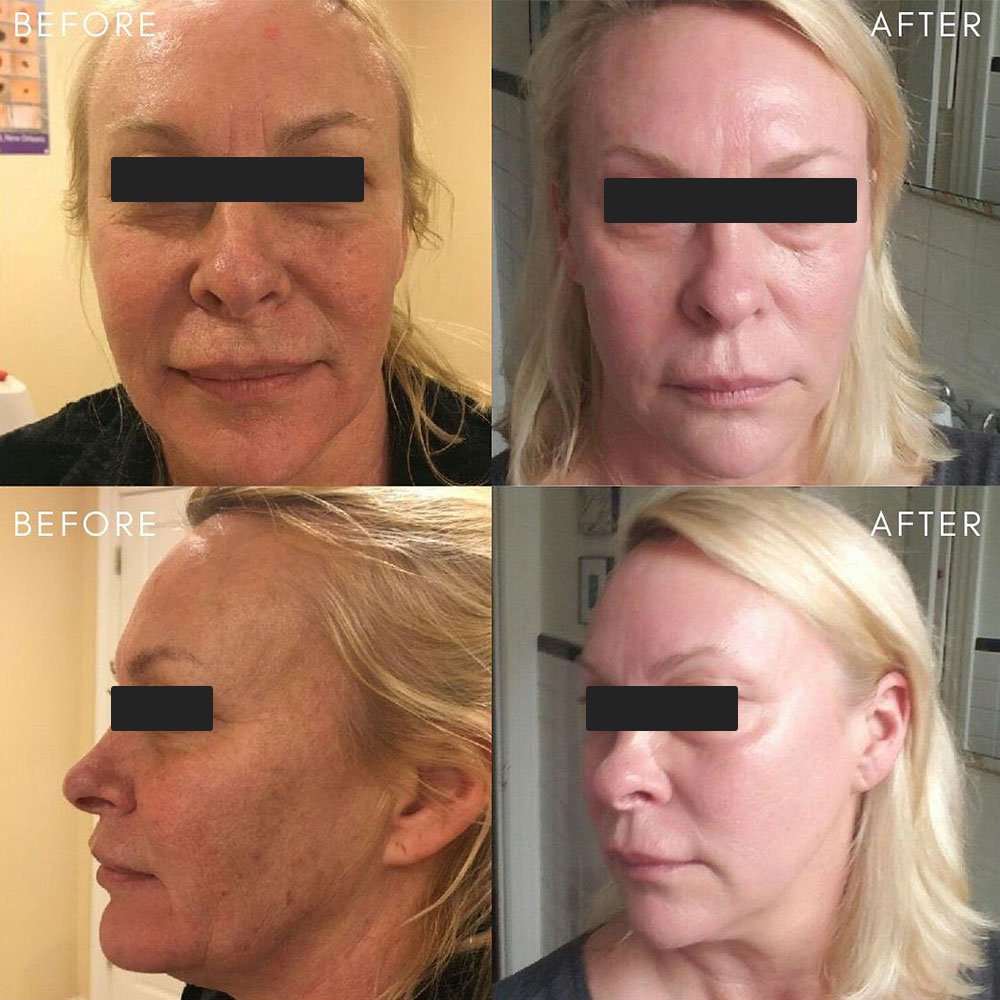
Who Shouldn’t Get Laser Skin Resurfacing?
There are some cases in which laser skin care treatment isn’t the best idea. It depends a lot on your specific skin type, age, and overall health, but some general forbidding factors are:
- Sagging skin
- Very deep wrinkles
- Very dark skin
- Active acne
- Herpes viral infection
- History of frequent laser treatments
Not all of these mean you’re automatically excluded from having laser resurfacing done. There might be viable workarounds, such as a different type of laser or a related but alternative procedure.
For example, if your wrinkles are too deep or your skin too loose for lasers to have a noticeable effect, your provider might recommend other skin tightening treatments, like microneedling or nanoneedling.
This can also happen if you have had many laser skin care treatments in the past which might have made your skin too sensitive to the procedure.
If you’re prone to cold sore outbreaks, your provider will recommend a course of antiviral medication before and after your laser procedure.
If you’re naturally very dark-skinned, they might opt for an erbium laser over other types, to reduce the risk of post-treatment hyperpigmentation.
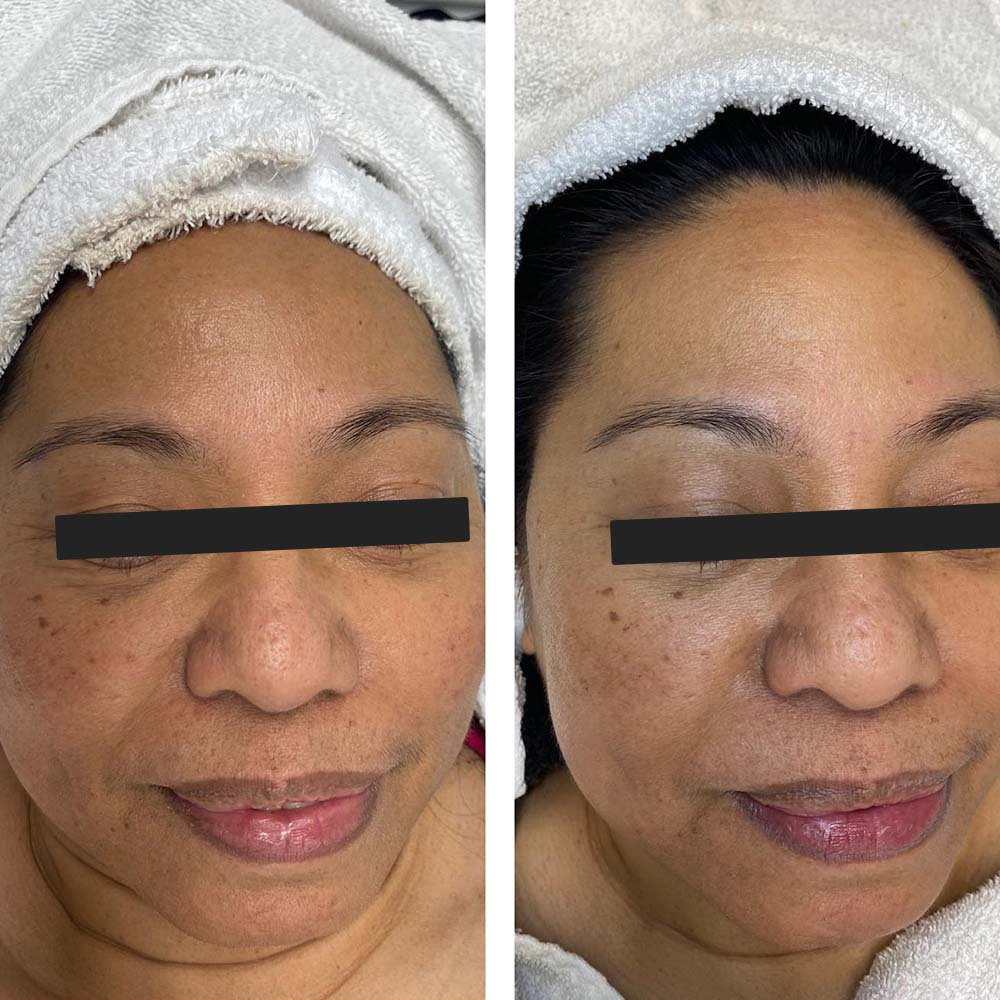
The Pros and Cons of Laser Skin Resurfacing
Laser resurfacing has its benefits and downsides, like any procedure. Here’s an overview of the good and bad sides of laser skin care treatments in general.
What Are the Pros of Laser Resurfacing?
While each type of laser treatment has its own strengths, they all share some upsides, including:
- Great versatility
- High effectiveness
- Excellent precision
- Increased skin health
- Boosted collagen and elastin production
- Long-lasting results
You should discuss your desired results with your provider. They will tell you what you can realistically expect and what the best course of action is for your specific case.
What Are the Cons of Laser Resurfacing?
Like most cosmetic procedures, laser treatments have some potential negative aspects. In general, these include:
- Risk of side effects
- Not suitable for everyone
- Somewhat invasive
- Require anesthesia
- Relatively expensive
You should discuss your concerns with your provider. They will tell you what risks you can expect from the specific procedure, how to minimize or eliminate them, and how to handle any undesirable effects that do potentially occur down the line.
What Does a Laser Skin Resurfacing Procedure Look Like?
Laser skin resurfacing is an outpatient procedure, meaning you won’t need to stay at the facility overnight. There may be small variations between specific treatments, but the general flow of the appointment is the same.
Preparation
Prior to your appointment, you will need to follow whatever preparatory instructions your provider gave you (e.g. antiviral med course, avoiding tanning, etc.). When you come in for the treatment, there will be a few prep steps.
First, your provider or their associate anesthesiologist will provide numbing to the treatment area.
If you’re treating just one or two specific areas, local anesthesia is enough. You might also receive an oral or intravenous sedative.
If you’re treating your entire face or another large area of skin, you may be given general anesthesia.
The treatment area is then given a thorough cleaning.
Procedure
Once you’re comfortable and the anesthesia kicks in, the actual procedure begins. They might protect your eyes with glasses, goggles, or a mask.
If you’re under general anesthesia, your anesthesiologist or another qualified associate will be right there to keep an eye on you while the provider applies the laser to your skin.
Partial treatments of the face usually last between 30 and 45 minutes. Treating the whole face or another large area can take anywhere from 1.5 to 2+ hours.
The specific mechanism and duration of the treatment will depend on the issue treated, area size, and laser type.
Aftercare
After the skin resurfacing procedure is finished, your provider will coat the treated area in a non-stick dressing for 24 hours.
If your skin tone is very dark, they may also apply a bleaching agent to prevent post-treatment hyperpigmentation.
After that, you’ll need to follow their instructions for cleansing and nourishing.
You will most likely be told to clean the area 2-5 times a day, either with a saline solution or a diluted vinegar solution. You’ll also be prescribed an ointment or moisturizing cream to keep the area hydrated and prevent any excessive scabbing.
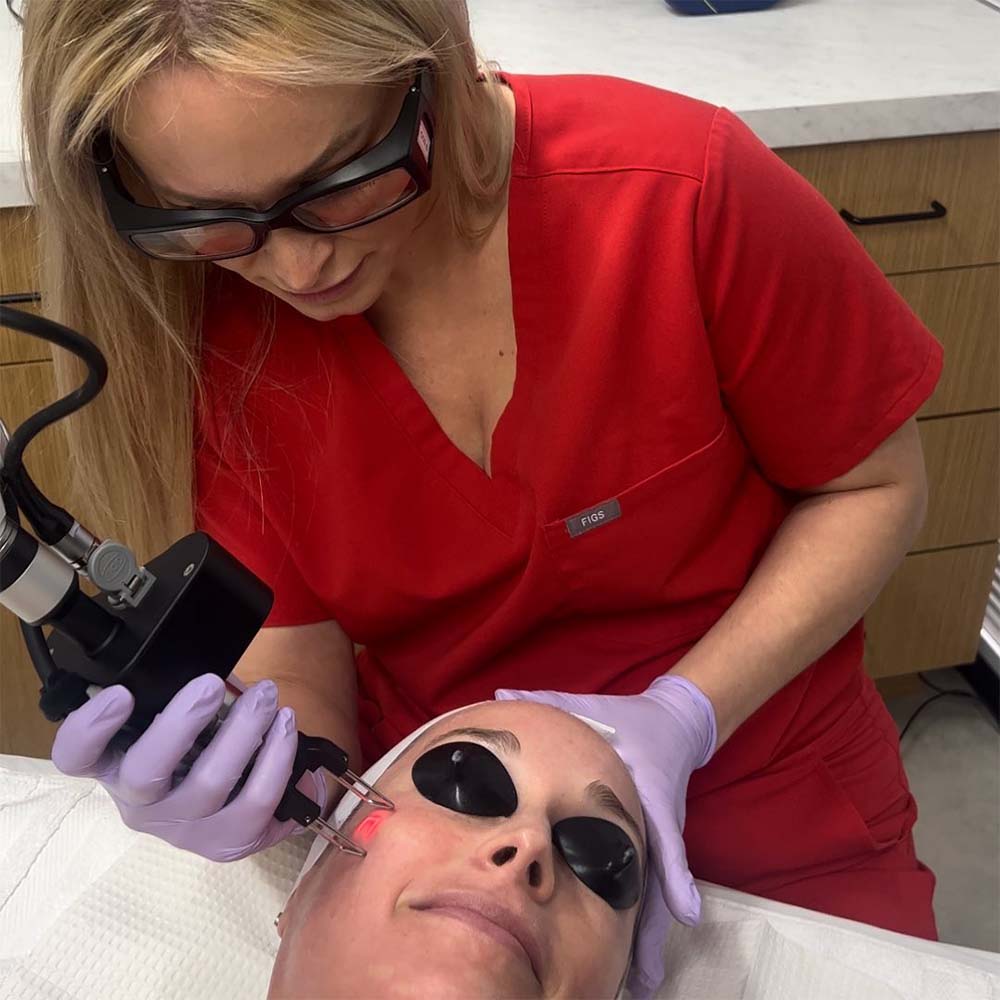
Post-Healing
After your skin has healed, you can expect it to remain noticeably pink or red for a period of time. This can persist for anywhere from 2-3 months up to a year. It tends to last longer in blondes and red-haired people.
During this period, you can use makeup to cover or neutralize the redness if you’re uncomfortable with it. Makeup with green undertones is best suited to neutralizing red pigmentation.
Your provider will most likely recommend using oil-free cosmetics, to prevent clogging your newly sensitive skin. In addition, they might recommend a specific moisturizer and a broad-spectrum SPF.
How Long Does It Take to Heal from Laser Resurfacing?
The timeline of your healing after laser skin resurfacing will depend on a few factors, including:
- The nature of your condition
- The size of the treated area
- The type of laser and treatment method
- Your skin type
- Your immune system and natural healing rate
- Your age and overall health
Generally speaking, most people recover from laser resurfacing within 5-21 days.
You might experience aftereffects such as pinkness or redness of the skin, sun sensitivity, etc. for an extended period afterward, though.
Consult with your provider about what you can expect and how best to care for your skin after your procedure.
Does Skin Resurfacing Have Any Side Effects?
Like any plastic surgery procedure, laser skin resurfacing comes with a certain level of risk. These are the complications that you should be aware of:
- Prolonged redness
- Swelling
- Scarring (rare, but possible)
- Milia
- Hyperpigmentation
- Hypopigmentation (less likely)
- Cold sore flare-up
- Acne flare-up
- Bacterial infection
You can alleviate or eliminate most of these with strategies such as ice packs, hydrating and SPF products, cleansers, and prescribed medication.
Consult your provider about any concerns prior to the treatment. Also, keep them updated about any adverse effects you notice in the weeks and months following the procedure.
Remember that proneness to these side effects heavily varies between individuals. Be transparent about your medical history, current medication regimes, sensitivities, allergies, etc.
Your provider needs that information to accurately assess your risk levels and plan treatment accordingly.
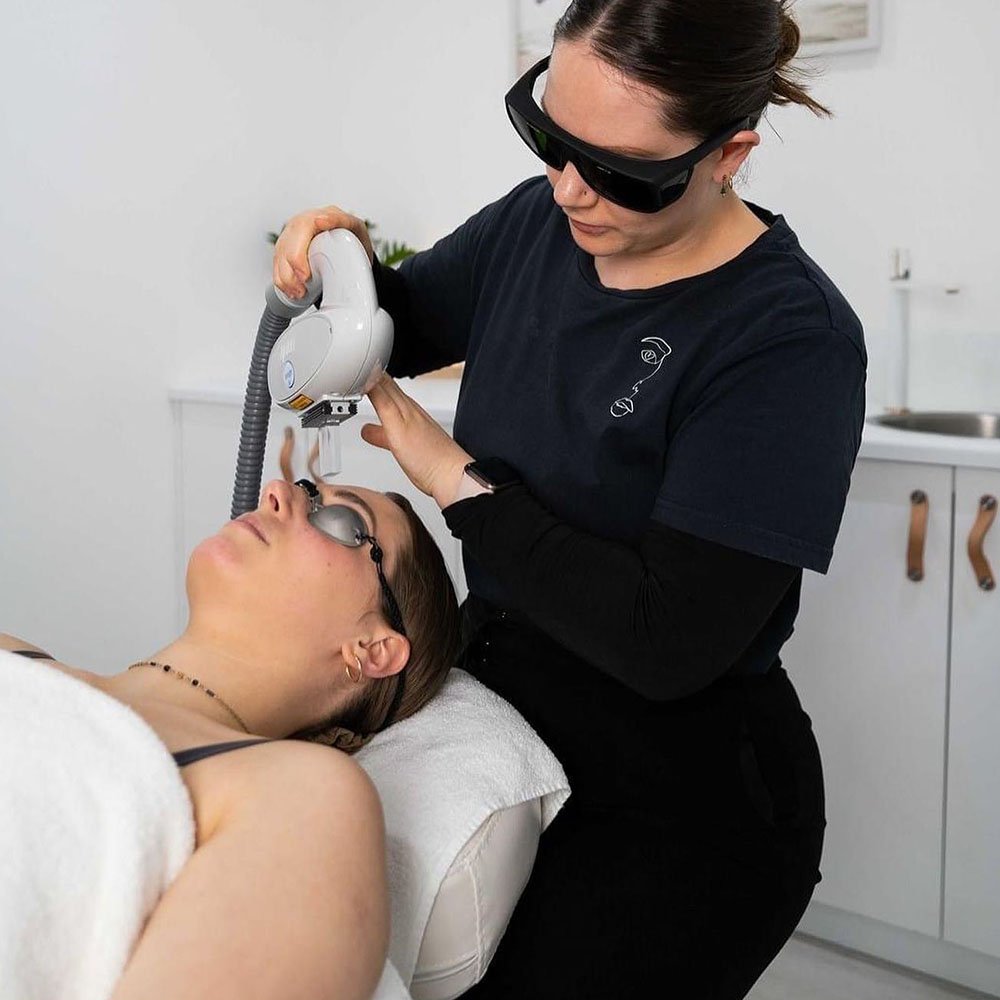
How Much Does Laser Skin Resurfacing Cost?
According to recent statistics from the American Society of Plastic Surgeons, the average cost of ablative laser skin resurfacing is around $2,500, while the average price of non-ablative skin resurfacing procedures is around $1,400 per session.
Keep in mind that these numbers don’t represent the total price. You need to plan for other related expenses such as anesthesia, aftercare products, etc. In addition, non-ablative treatments usually require more than one session.
Health insurance usually doesn’t cover the costs of laser skin resurfacing, since it’s categorized as an elective cosmetic procedure.
The only possible exception is if the condition you’re treating is determined by your insurance provider to be a genuine medical problem, like if it somehow resulted from an accident or injury, but that’s fairly rare and not very likely.
Instead, ask your provider about financing strategies. They usually have payment plans and other options for their patients.
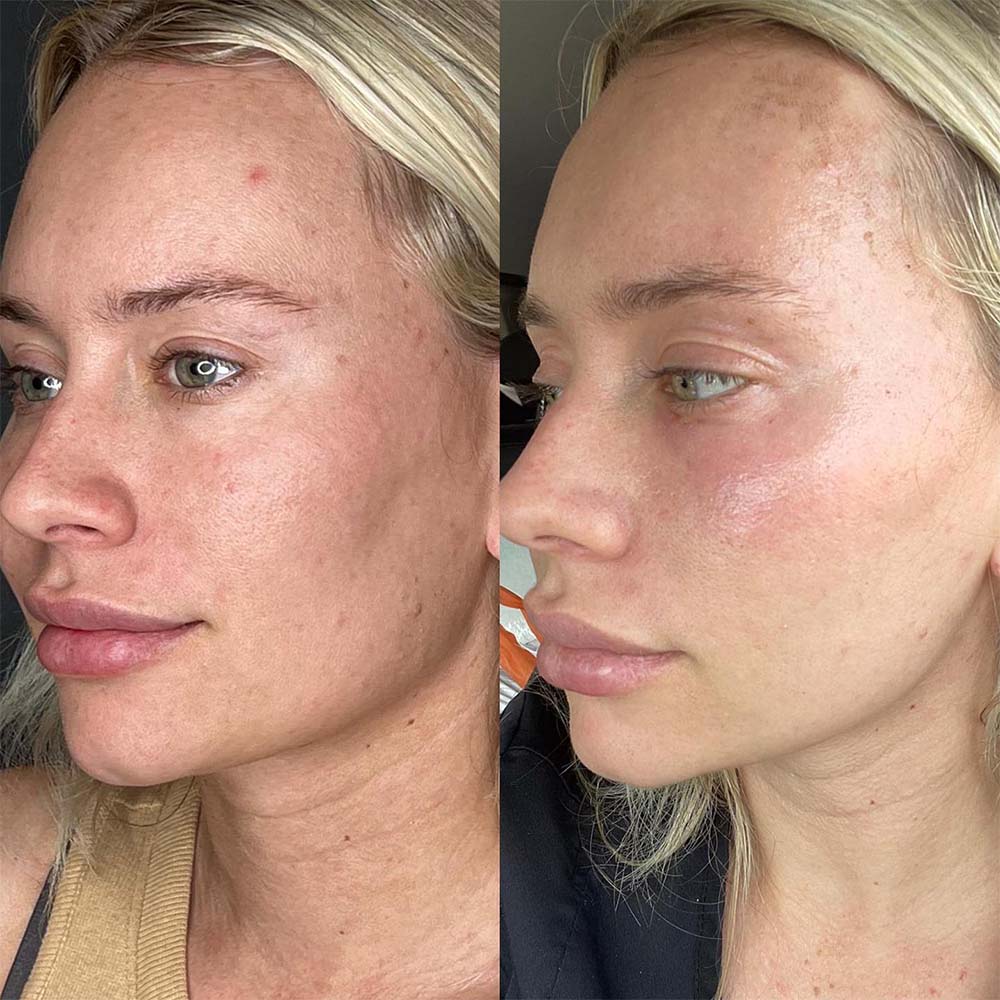
Laser Skin Resurfacing – Main Takeaways
Looking at the whole picture, laser skin care is definitely worth it. Admittedly, it’s a large investment and comes with some level of risk. However, the benefits more than make up for it.
Facial resurfacing is an exceedingly versatile and potent treatment option. It can help with a wide range of concerns, both aesthetic and medical. The potential side effects can all be effectively managed or outright prevented.
A successful laser resurfacing procedure can reduce or eliminate skin conditions that people struggle with for years. It restores skin health, boosts confidence, and best of all – the results last for many years.
weekly insight into PMU insdustry
Subscribe to our FREE newsletter. 100% good stuff.

support us so we can keep providing you with free education , information and inspiration.
